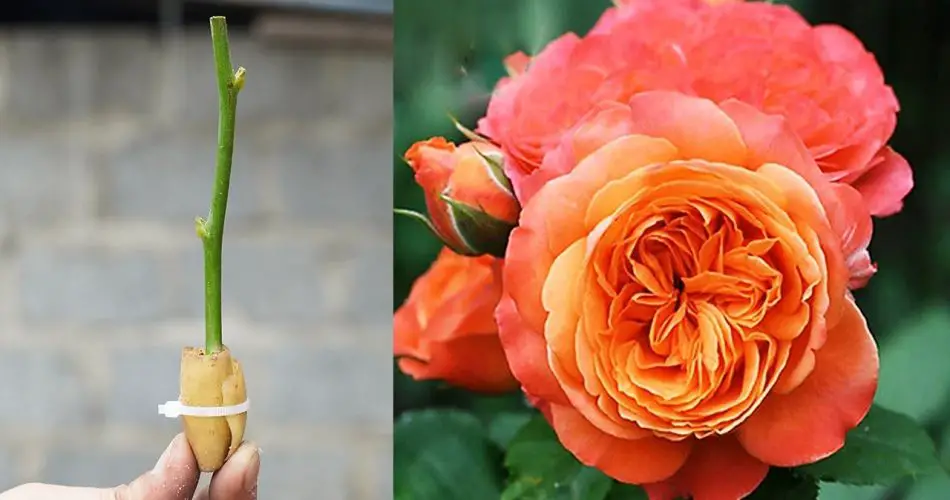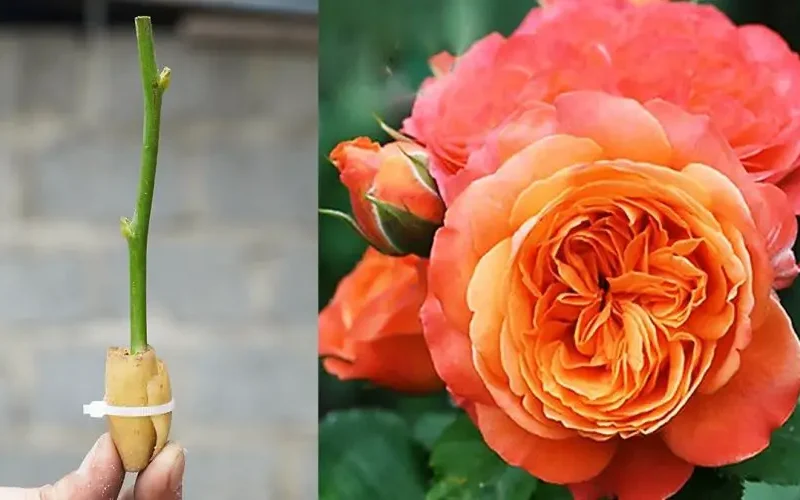
- Monitor for Pests and Diseases:
Keep a vigilant eye on your rose plants for any signs of pests or diseases. Common pests that may affect roses include aphids, thrips, and spider mites, while diseases like powdery mildew and black spot can also occur. Inspect the leaves, stems, and flowers regularly, and take prompt action if you notice any issues. You can use natural remedies such as neem oil or insecticidal soap to control pests, and fungicides specific to roses to combat diseases. - Support Climbing Varieties:
If you’re growing climbing rose varieties, provide sturdy support structures such as trellises, arbors, or pergolas for them to climb and flourish. Secure the stems gently to the support using soft ties or twine to prevent damage. Regularly train the stems to encourage them to grow in the desired direction, and prune any overly vigorous growth to maintain the shape and balance of the plant. - Mulch and Weed Control:
Apply a layer of organic mulch, such as shredded bark or compost, around the base of your rose plants to conserve moisture, suppress weeds, and improve soil health. Mulching also helps regulate soil temperature and reduces the risk of erosion. Ensure that the mulch is applied evenly and kept away from direct contact with the stems to prevent rot and fungal diseases. Regularly remove any weeds that emerge within the rose bed to reduce competition for nutrients and water. - Deadheading and Pruning:
Deadhead faded blooms regularly to encourage continuous flowering and prevent the formation of seed heads, which can divert energy away from new growth. Use sharp and clean pruning shears to remove spent flowers by cutting just above a healthy leaf node or outward-facing bud. Additionally, prune your roses annually during the dormant season to remove dead or diseased wood, improve air circulation, and shape the plant. Proper pruning helps rejuvenate the rose bushes and promotes vigorous growth and abundant flowering in the following season. - Winter Protection:
In colder climates, provide winter protection for your rose plants to safeguard them from frost damage and harsh weather conditions. Mulch the base of the plants with a thick layer of straw, pine needles, or shredded leaves to insulate the roots and prevent freezing. You can also wrap the canes with burlap or horticultural fleece to shield them from cold winds. Alternatively, consider growing cold-hardy rose varieties or planting roses in sheltered locations to minimize winter damage.
By incorporating these additional tips into your rose breeding and care routine, you can ensure the continued health, vigor, and beauty of your roses throughout the growing season and beyond. With proper attention and maintenance, your rose garden will thrive and become a source of joy and admiration for years to come.
